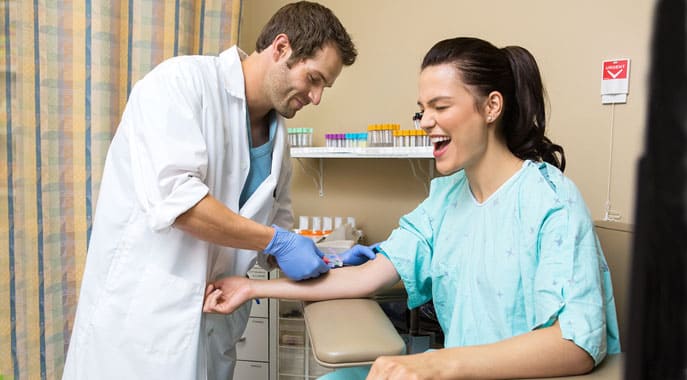Safety and infection control are paramount in the field of phlebotomy. For healthcare professionals, aspiring phlebotomists, medical students, and career changers, understanding and implementing these protocols is crucial to ensure both patient and practitioner safety. This blog post will provide an in-depth look at the importance of safety and infection control in phlebotomy and offer essential guidelines to follow.
Importance of Safety and Infection Control in Phlebotomy
Phlebotomy involves the collection of blood samples for medical testing, transfusions, research, and donations. Given the direct contact with blood and other bodily fluids, there is a significant risk of transmitting infections and bloodborne pathogens. Therefore, adhering to stringent safety and infection control measures is essential to prevent contamination and ensure the well-being of both patients and healthcare providers.
By integrating these practices into your daily routine, you can contribute to a safer and more efficient healthcare setting. For more information and resources on phlebotomy and infection control, visit PhlebotomyCourse.UK.

Overview of Key Protocols
Importance of Hygiene and Infection Control
Maintaining high hygiene standards is the foundation of infection control in phlebotomy. This includes regular handwashing, proper use of personal protective equipment (PPE), and keeping the work environment sterile.
Proper Handwashing Techniques
Effective hand hygiene is the first line of defense against infection. Phlebotomists should wash their hands before and after every patient interaction. Use soap and water, scrubbing for at least 20 seconds, or an alcohol-based hand sanitizer if hands are not visibly dirty.
Use of Personal Protective Equipment (PPE)
PPE, including gloves, gowns, masks, and eye protection, acts as a barrier between the healthcare provider and potential infectious agents. Ensure that PPE is appropriately donned before any procedure and disposed of correctly after use.
Maintaining a Sterile Work Environment
A clean and sterile work environment minimizes the risk of infection. Regularly disinfect surfaces, equipment, and any other items that come into contact with patients.
Best Practices for Preventing Bloodborne Pathogen Transmission
Handling and Disposal of Sharps
Sharps, such as needles and lancets, pose a significant risk for transmission of bloodborne pathogens. Use puncture-resistant sharps containers for disposal and never recap used needles.
Dealing with Accidental Needle Sticks
Accidental needle sticks can lead to severe infections. In the event of a needle stick injury:
- Wash the area with soap and water.
- Report the incident immediately.
- Follow your facility’s protocol for post-exposure prophylaxis.
Protocols for Exposure Incidents
Exposure incidents include accidental contact with blood or bodily fluids. Immediate steps should be taken to decontaminate the exposed area and seek medical evaluation. Follow-up is crucial to monitor for potential infections and initiate treatment if necessary.
Safety Protocols and OSHA Guidelines
Overview of OSHA Standards for Phlebotomy
The Occupational Safety and Health Administration (OSHA) has established standards to protect healthcare workers from occupational exposure to bloodborne pathogens. These include the Bloodborne Pathogens Standard, which outlines the necessary precautions and procedures.
Compliance Requirements
Compliance with OSHA standards is mandatory for all healthcare facilities. This includes developing an exposure control plan, providing appropriate PPE, and offering hepatitis B vaccinations to employees.
Importance of Regular Training and Updates
Regular training ensures that healthcare providers are up-to-date with the latest safety protocols and infection control practices. Continuous education helps reinforce the importance of these measures and keeps staff informed about new regulations and best practices.
Implementing Safety Practices in Daily Routine
Creating a Safety-First Mindset
Instilling a safety-first mindset among staff is critical for the effective implementation of safety practices. Encourage open communication about safety concerns and foster an environment where safety is prioritized.
Regular Safety Audits and Inspections
Conducting regular safety audits and inspections helps identify potential hazards and ensures compliance with safety protocols. Address any issues promptly to maintain a safe working environment.
Encouraging a Culture of Safety Among Staff
A culture of safety is built through continuous reinforcement and encouragement. Recognize and reward staff who consistently follow safety protocols and contribute to a safe work environment.

Conclusion
Adhering to safety and infection control practices in phlebotomy is essential for the protection of both patients and healthcare providers. Key practices include proper hygiene, use of PPE, maintaining a sterile environment, and following protocols for handling sharps and exposure incidents.
Compliance with safety protocols is non-negotiable in the healthcare field. It not only ensures the safety and well-being of all parties involved but also aligns with regulatory standards and promotes a trustworthy healthcare environment. Stay safe, and keep learning!

